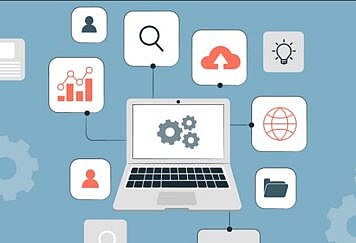Enhancing business efficiency and productivity is essential for staying competitive in today’s fast-paced market. It involves fine-tuning operations, embracing technology, and cultivating an excellence-focused workforce. Whether you’re leading a startup or managing an established enterprise, the benefits of streamlining processes are substantial. This guide is a roadmap to help business leaders identify and implement better performance and profitability strategies. Keep reading to uncover key insights on boosting your company’s operational effectiveness.
Streamlining Operations with Technology Integration

In the digital era, technology integration is crucial for optimizing business operations. Implementing the right tools and platforms can automate repetitive tasks, facilitate communication, and provide valuable analytics. However, this transition must be strategic to align with the company’s unique needs and goals.
One area in which technology can have an immediate impact is fleet management. For instance, companies like fluidtruck.com offer innovative solutions to streamline transportation logistics, making it easier and more efficient for businesses to manage their vehicle fleets without a significant capital investment.
Additionally, cloud computing has revolutionized the way businesses store and access data. By adopting cloud services, companies can enhance collaboration among team members regardless of location and scale their operations seamlessly. This agility allows businesses to respond quickly to market demands and customer needs.
Employee training on new technologies ensures the workforce can navigate and leverage these tools effectively. Inviting employee feedback can lead to a smoother transition and promote a receptive culture to technological advancements.
Implementing Effective Time Management Strategies

Effective time management is paramount to maximizing productivity. It starts with prioritizing tasks based on their level of importance and urgency. Equipping employees with the tools and training to manage their time can lead to significant gains in efficiency.
Another key strategy is delegating responsibilities. Managers often fall into the trap of micromanaging, which can lead to bottlenecks and stress. Delegating tasks frees up managerial time for high-level planning and empowers employees, giving them a sense of ownership and responsibility.
Automation is also a valuable time management tactic. By automating tasks such as reporting, scheduling, and communication, companies can reduce the time spent on administrative work, allowing the team to focus on more strategic initiatives that drive growth.
Lastly, providing flexibility, such as remote working options or early wage access, can lead to a more productive and satisfied workforce. Employees who control their work environment and financial well-being tend to be more efficient and invested in their work.
Monitoring Progress and Measuring Success in Real-Time
Monitoring progress and measuring success in real time is vital for continuous improvement, surpassing the limitations of annual reviews. Incorporating systems that offer immediate feedback empowers businesses to address issues that arise swiftly. Real-time monitoring enables proactive identification and resolution of challenges as they emerge, enhancing overall operational effectiveness.
Key performance indicators (KPIs) should be established to track efficiency and productivity at all levels of the organization. These metrics should align with the company’s strategic goals, and be relevant and actionable. Dashboards and other data visualization tools can present this information in an accessible manner, aiding in swift decision-making.
It’s also important to maintain open lines of communication with employees about these measurements. When staff understand how their work correlates with the company’s success, they can align their actions accordingly. Regular check-ins and updates can keep everyone on the same page and moving toward the same objectives.
Finally, while numbers are essential for monitoring progress, qualitative feedback from employees, customers, and partners provides invaluable insights. By coupling quantitative data with qualitative feedback, businesses can have a holistic view of their performance and areas for improvement.
Optimizing business efficiency and productivity requires a multifaceted approach encompassing technology integration, effective time management strategies, and real-time progress monitoring. By embracing these principles, businesses can streamline operations, empower their workforce, and stay agile in a competitive market landscape. Continuous improvement driven by data-driven insights and qualitative feedback will position companies to thrive and adapt to evolving challenges effectively.
Follow TechStrange for more Technology, Business and Digital Marketing News.





